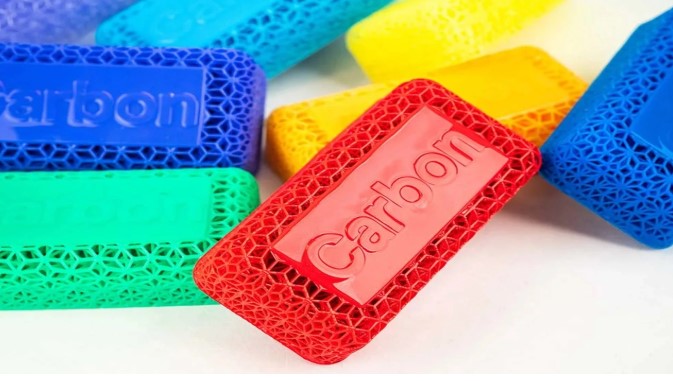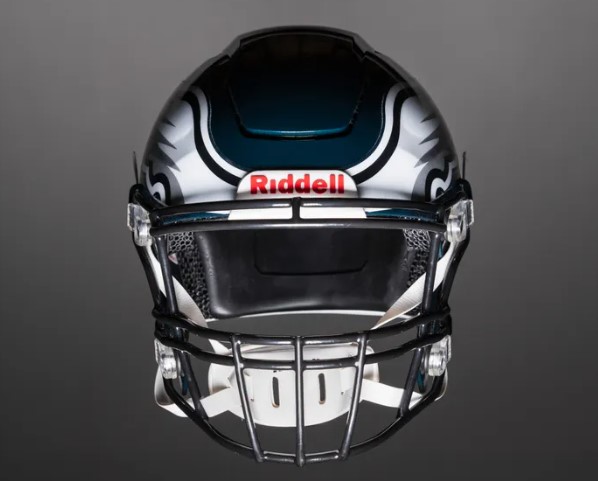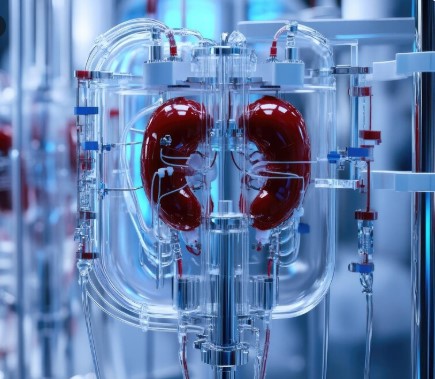Transform Your Designs: How Smart 3D Printing Enhances Product Creatio
Updated
Wednesday 19 March 2025
15:0

- Only traditional levels of benefits can be obtained by continuing to manufacture traditional products.
Did you know? You can comment on this post! Just scroll down
- High-performance products that are precisely tailored can be produced by varying the lattice cell types, cell sizes, and strut widths.
- Over the next ten years, consumer-level customisation capabilities will increase.
The status quo Innovation is frequently stifled by industrial processes, and although 3D printers have gained traction, they are insufficient on their own to bring about significant change.
The Silicon Valley-based 3D printing startup Carbon created a Digital Light Synthesis (DLS) method that uses specialized materials, cutting-edge software, and adaptable printers to produce useful parts with improved functionality and appearance.
Engineers and designers can create items that function better with the aid of the DLS technique. For businesses like Adidas, Ford, and Becton Dickinson, Carbon provides low-volume production, production-at-scale, and prototyping services.
We caught up with Phil DeSimone, CEO of Carbon, to get his take on the company’s design and print process. Carbon does things a little differently with the understanding that the 3D printer is not necessarily the tip end of the spear.

Can you give us a brief overview of Carbon?
Phil DeSimone: We’re a product development and manufacturing technology company that is expanding what can be made by helping companies make better products – and indeed produce previously impossible products – and bring them to market in less time. We achieve this via an idea-to-production platform, built around advanced materials, software, hardware, and services. This leverages 3D printing as a digital portal for physical products, or as I like to say, the export button, that allows us to solve hard problems and empower creators to achieve these goals in ways not possible with traditional technologies.

This is important, because remaining with traditional product manufacturing will only ever deliver traditional levels of benefits. By looking to smarter techniques, we’re enabling brands to design, develop, and manufacture premium products that offer enhanced performance, comfort and protection across those industries and application areas in which we have our crosshairs.
What are the main industry sectors Carbon operates in, and which types of customers do you serve?
DeSimone: We work in a lot of different sectors, namely automotive, industrial, MedTech, dental and consumer/professional sports equipment. Taking that last one as an example, we have established ourselves very well within some niche applications like helmets and bike saddles. This has seen us forge close relationships with brands like Riddell and CCM on the helmet side, as well as saddle manufacturers that among others include Specialized, Selle Royal and Selle Italia – all of whom have realized that 3D printed saddles are better than traditional options.
Similarly, we continue to enjoy close ties with many footwear brands, exemplified by our collaboration with Adidas a few years ago which led to the creation of the world’s first 3D printed, anisotropic lattice midsole. This innovation is designed to propel you forward using only your normal vertical impact pressure. We’re really excited about the emerging capability in footwear to print full shoes with little to no assembly required. Carbon is very bullish on this market and it’s cool to see shoes that don’t look like or perform like anything we’ve seen previously.
In a market with plentiful additive manufacturing vendors, what does Carbon offer that differentiates itself?
DeSimone: Since our creation, I think that above all, we have discovered the challenges and the flaws in the way products are made. Even if we have a technology that can print something much faster than the competition, that's only a very small part of the equation to successfully bring a new product to market.
We don't simply sell customers a 3D printer and leave them to it. Instead, we recognize that for our customers to get the best out of our technology, they need to understand how to design for that process, something that inspired our
Design Engine latticing software. This lets designers control performance characteristics across multiple zones in their product design for massive tunability of a single material. That means leveraging different lattice cell types, cell sizes, or strut diameters to create precisely tuned, high-performance products.
One example is what we're doing with our customers in the thermoforming space, which is quite competitive unless you have software tools to help drive down costs, which means printing faster. But to do that you need a resin designed to go faster yet still be strong enough to withstand thermoforming pressures, which also can't happen unless you have hardware that is scripted to run fast for those specific applications. Achieving the final product is due in part to all three of those disciplines coming together.
We also aim to acknowledge the respective needs of different customer personas. There’ll be those operating a 3D printer as well as those – typically designers – using that same 3D printer. This is the group that is drawing in CAD, creating new product designs, and sending those files to the machine. Importantly, these users are concerned with the spec sheets around the product that they're trying to build, not the tool that they're using to build it. I want to inspire these people with the capabilities of the technology and the best way to do that is to show them the completed product that you can buy in store that, thanks to the way in which it is designed and made, performs better than any other.
Often in our industry, there’s too much focus on speeds and feeds. For a customer who just wants to make a product, it's like going to a restaurant, seeing a pile of ingredients, and being asked what you want to make – rather than seeing completed dishes and having what’s special about them explained to you.

The 4DFWD from Adidas uses Carbon’s latest high-performance resin optimized for forward motion and a smoother transition delivering a unique running experience. Image courtesy of Carbon.
Explain why Carbon has chosen to use a subscription model with partners.
DeSimone: The subscription model for a 3D printer essentially partners us together with customers. Moreover, it compels us to ensure users are optimizing a 3D printer’s full capabilities so the machine is useful to them; otherwise, they’ll just return it.
As a subscribing partner, you now have access to the brain trust that we've built with hardware developers, programmers and material scientists – all of whom are grinding away tirelessly to constantly improve the equipment you’re running. For instance, elastomer materials on our M3 3D printer are now 50% faster in print time, since the platform was launched.
Embedded sensors on that machine help us write better scripts for the printed output, so we can send those updates to customers over the air to increase the performance and reliability of their printer. We develop these scripts to each material, just like other companies, however, we often go beyond that and think about the printing needs of each unique application to make sure that we’re optimizing production in a way that makes viable economic sense as well as a great final part.
But again, 3D printing isn’t the tip end of the spear; it's the enabler that gets us to the end goal. While fundamental, the real deal is the design – including the right materials, structures and processes. That and knowing from the outset what your customer wants and how to get them there.
DeSimone: I think we’ll see personalization capabilities at the consumer level grow over the next ten years. Traditional manufacturing focuses on making the same thing a million times, but I envisage manufacturers increasingly leveraging technology like ours to offer much more product variety suited to the individual consumer’s needs – and without the traditional manufacturing overheads. Low SKU volume, but high SKU variety.
Taking cycling saddles as an example, I believe we’ll see an increased number of SKUs offering various widths and riding styles, each accommodating the individual rider’s different anatomy and needs. It’s not about making different tools, but rather tweaking and redesigning it again and again. The same could be applied to cars, where we might see variants that are designed differently to suit various needs vis-vis aesthetics, purposes and tastes across different regions.
We may even see less very large major brands, and a rise of smaller companies making specific personalized products for their audiences. I think this is where things are headed – greater use of an extremely flexible technology, using ever-advancing materials that put products in the hands of consumers, where they need it, when they need and even at a batch size of one. After all, minimum order quantities are something that plagues good ideas, while unnecessary over-production can often have an obvious adverse impact on the environment.
Advancements in AI and machine learning are obviously hot topics for the industry; what opportunities do you see for integrating these technologies into Carbon’s platform, now and over the longer term?
I think what people are mostly thinking of is generative AI. And those are in different flavors, like text generation or diffusion models for imagery and video, so who can make a text to CAD that makes parts that are ready to print.
We’ve taken a more practical approach to machine learning tools and are already using them on many of our dental processes and quality control procedures, including within our build packing and with a couple of simulation practices. With materials like those used in our lattice structures, we can simulate non-linear forces and then extrapolate them to other materials and other lattice combinations so that we can give customers a good idea of what their lattice response will do physically. We make this work available through our Lattice Search as part of Design Engine.
So definitely in the dental world there’s some interesting developments around automatic or AI-assisted design work, like the design of a denture base or a night guard, or applications that can be automated by these tools. For me, design in the dental space is probably the first big benefactor of these AI tools. And if we see AI continue to drive automation, we will see some important applications realized, one of which is with 3D printed dentures.

Carbon works very closely with Riddell, whose football helmets feature 3D printed, high performance, impact absorbent, and tunable lattice components. Image courtesy of Carbon.
DeSimone: As it should, it features very highly as part of our activities. The biggest problem within manufacturing today is overproduction, and the amount of waste, due to the subtractive process on which many traditional technologies are based. If companies produced only what consumers needed, no more, no less, it would be a big win for the planet. This is obviously a fundamental benefit of efficient sustainability-driving technologies like our own. But even within that, there’s always room for improvement. Some of our materials are up to 40% bio-based; the elastomers can be ground down and melted for recycling into molds, for example. Certain footwear brands, and clear aligner brands with huge production volumes with whom we work, have also removed isopropyl alcohol solvent within the production of mid-soles. After they’re spun, we reclaim the excess wet resin, which is the same process we use in the thermoforming space in order to reduce the amount of waste and harmful chemicals.
DeSimone: I think the biggest hurdle is still just to get people to think a little differently about production cycles and how they approach the market, since both are traditionally designed around manufacturing cadences. This mindset will only change based on the speed at which you can build new molds – which aren’t built at all unless you're 100% confident you're going to sell that product. It’s a bit of a chicken-and-egg situation, but we need to push organizations to rethink their go-to-market strategies and reconsider how they sell, how they think about their cycles, and how they can go faster.
The mindset is changing, but we still need to ensure more designers and manufacturers are aware of the multiple end-to-end design to production benefits they can leverage with this technology, especially via some incredible materials. From our own perspective, there’ll always be a need to educate the market, because we’re always innovating and pushing new boundaries, rather than standing still.
DeSimone: Our main focus is to do just that – to focus on our core technology offering. Others do it differently and some offer multiple different 3D printing technologies, but that can invariably leave you quite stretched and unable to really and truly stand out in one single area. Within the elastomer space, we have a very good, versatile, dependable and proven technology that we want to make even better and that’s what we plan to do. Whether it’s digital dentures for dental labs, saddles within the cycling space, footwear, or helmets for professional sports, we’ve picked our lane in a few key application areas and are committed to making a demonstrable difference for brands seeking to transform the way they make products.






















